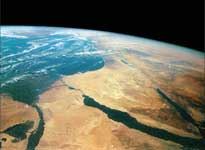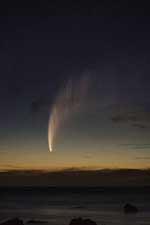|
|||||||||||||||
|
|||||||||||||||
%
responses |
|||||||||||||||
y4 |
y8 |
||||||||||||||
 Image sourced, with thanks, from: NZCER; http://arb.nzcer.org.nz/resources/science/planet/9000/pe9056.htm (March, 2007). Originally derived, by NZCER, from http://www.nasa.gov |
Hand student planet picture. Here is a picture taken from outer space of part of planet Earth. 1. What does this picture tell us about the shape of the earth? |
||||||||||||||
that the earth is a sphere (ball) |
9 |
13 |
|||||||||||||
that the earth is curved/round |
76 |
76 |
|||||||||||||
no relevant response |
15 |
11 |
|||||||||||||
|
Hand student comet picture. Here is a picture of a comet seen in our night sky. 2. What is a comet? |
||||||||||||||
a fast moving object in space |
14 |
25 |
|||||||||||||
a bright moving object in sky |
13 |
13 |
|||||||||||||
it has a tail |
3 |
7 |
|||||||||||||
it is made up of rock/ice/dust |
6 |
16 |
|||||||||||||
|
Hand student moon phase picture. Here are some pictures of the moon on different nights. 3. Why does the moon look different on different nights? |
||||||||||||||
because the sun’s light reflects off
the moon to our eyes |
14 |
28 |
|||||||||||||
which parts of the moon are seen depends
on the relative positions of the
sun,earth and moon |
12 |
29 |
|||||||||||||
student gives a really clear example (such as seeing left side of moon because sun is shining from the left, as we are looking at the moon) |
1 |
3 |
|||||||||||||
Total
score: |
4–9 |
6 |
16 |
||||||||||||
3 |
11 |
19 |
|||||||||||||
2 |
28 |
30 |
|||||||||||||
1 |
45 |
31 |
|||||||||||||
0 |
10 |
4 |
|||||||||||||
| Subgroup Analysis [Click on charts to enlarge] : |
| Commentary: |
| Most students showed limited knowledge and understanding of these astronomical features or phenomena. |


